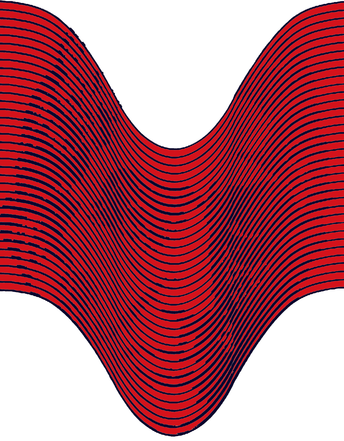Lambert Adolphe Jacques Quetelet1796–1874
Quetelet has been called the father of social and psychological statistics. Indeed, the term statistics, as it is now used, was introduced by him. He applied his training in mathematics and probability initially to physical and then to psychological dimensions of individuals. For example, he utilised published measurements of chest girths of 5,738 Scottish soldiers and noted that their distribution approximated the normal curve - the bell-shaped curve that was developed in the context of games of chance. “Take men of the same age… measure them in height, in weight, in strength, or for any other physical quality whatever, or even for an intellectual or moral quality, and you will see these men array themselves…in the most regular manner. No matter in what order one takes them, in every age they will fall into numerical classes like the ordinates of the same curve. This law is uniform, and the curve, which I have called binomial, is always the same; it is perfectly regular, no matter what test one wishes to apply to human nature.” The individual who had characteristics corresponding to the mean of the normal distribution was referred to as l'homme moyen or the average man, although an adequate definition of l'homme moyen required the upper and lower limits as well as the mean of the appropriate dimensions. In his application of the concept to the height of 100,000 French conscripts, he noted a discrepancy in the observed and predicted heights and inferred that a number of men had been fraudulently rejected - an early example of the rejection of the hypothesis of chance. He considered that progress in the social and psychological sciences could learn from physics by making a large number of measurements and taking averages. His studies of social statistics, like crimes, suicides, mortalities, and illegitimate births, demonstrated a constancy year by year, and thus an inevitable predictability. He stated: “so long as the same causes exist, we must expect a repetition of the same effects”. Wundt was later to say that we can learn more from such statistical analyses than we can from philosophy. Quetelet was born in Ghent and was the first student to receive a doctorate from the University there. His training was in mathematics, which he applied to astronomy. It was on visiting Paris, to learn the new methods of astronomy, that Quetelet was introduced to the theory of probability, which he applied in so many novel areas. He also travelled extensively visiting observatories, and making contacts with other scientists. He was a catalyst for the organization and communication of scientific ideas. Through his influence, a Commision for Statistics was founded in Belgium, as was a Statistical Society in London, and he presided over the first International Statistical Congress in 1853 at Brussels. Quetelet’s portrait is presented in his beloved bell-shaped curve, but it has been inverted so that it provides a better fit to the facial features of the average man.
